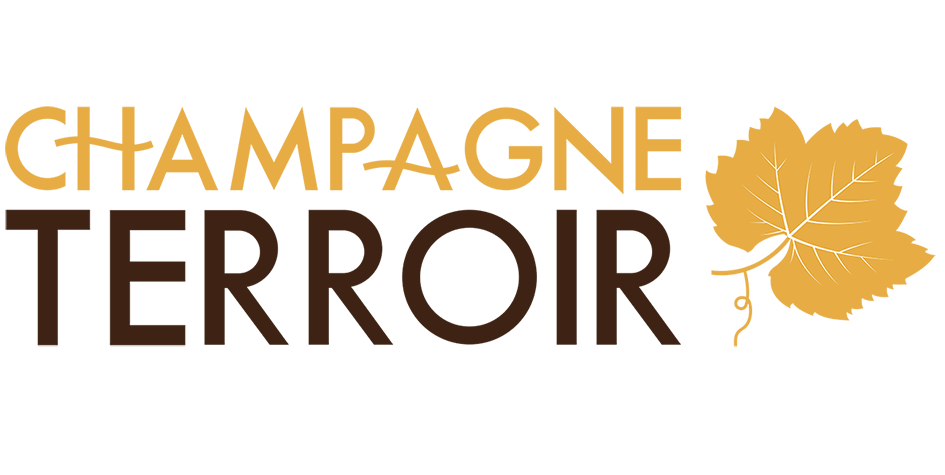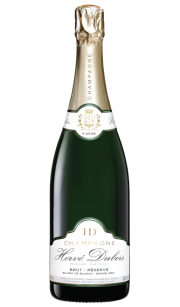

Champagne Hervé Dubois
South of Épernay lies the Côte des Blancs and its Chardonnay vines which have made its reputation. Hervé Dubois champagne is located in the heart of this exceptional terroir, in Avize, one of the 5 villages classified as Grand Cru in the region.
This family house grows Chardonnay, inseparable from this chalky terroir, but also Pinot Noir and Pinot Meunier.
The signature of the house?
A typical balance between freshness and structure that can be found in every cuvée.

From darkness to light
The origins of the house go back to 1920, when Paul Dubois, a native of the Ardennes and coachman at Château de Cazanove (Avize), began transporting wine by horse.
To feed his horses, the throbbing heart of his business, he acquired his first fields and a few vines in the deal. Fodder was scarce in the post-war period and farmland was valued much higher than vines. This first purchase was quickly followed by Paul and his wife's move to a small farm which would later become the centre of their farming activities.
Against all odds, Paul finally gave up his transport business to devote himself to wine growing. He produced his first champagne in barrels and began marketing it under the Paul Dubois brand before taking part in the Great Paris Fair of 1940.
When Paul died, in 1962, his son Jean took over the family business, assisted by his wife Monique, daughter of three generations of winegrowers. This generational change took place at the height of the Champagne boom. A breeze of modernity blew over this region, which had long been sidelined. Champagne was taking off and its wines began to flourish as we know them today. Like so many other families, Jean Monique decided to abandon their farm activities and devote themselves exclusively to winegrowing and their brand, Jean Dubois champagne. This led to radical changes in the family estate, with the arrival of the first tractor, shortly followed by a modern vat room and press. They devoted their lives to developing their house and vineyard in the Côte des Blancs.
In turn, two of their four children, Gérard and Hervé, carried on the family legacy.
Hervé, the youngest, started his own adventure at the age of 21 and marketed his own brand in 1981. Today, he cultivates 6.5 hectares of vines. He loves winemaking and produces a range of champagnes with the same line of conduct, minerality and great freshness.
Hervé and his brother Gérard worked closely together to keep the business created by Paul alive. Gérard also marketed his own brand and retired in 2008.
A passion passed on from generation to generation, which continues with the arrival in 2012 of Hervé's daughters, Nina and Lola.
A winegrower inseparable from his terroir
One must understand Champagne to understand a house. The Champagne appellation covers 30,000 hectares in 320 different villages. The vineyard owes its richness to its fragmentation, each village constituting a cru, the product of a terroir and a climate. Depending on grape quality, the villages classified between 90% and 99% are called Premier Cru and the 17 villages classified 100% are called Grand Cru. South of Epernay is the Côte des Blancs where 5 villages are classified Grand Cru, including Avize. Only Chardonnay is produced there, hence the use of the term "Blanc de Blancs".
The terroir of Avize represents nearly 262 hectares, a small but high quality terroir. Chardonnay began to be grown in this village as soon as champagne appeared, especially for its ability to foam well. The whole of the Côte followed when it realised that this terroir was made for this grape variety, as the wines produced from it were so fine and elegant. Avize champagne from chalky soils reaches perfection, finesse and exceptional minerality.
Today, Hervé Dubois champagne grows 6.5 hectares of vines, including 3.50 hectares of Chardonnay Grand Cru in the Côte des Blancs and 0.50 hectare of Chardonnay Premier Cru in the Reims Mountain, which will produce wines of great elegance with great freshness and delicacy. Another 1.50 hectares of Pinot Meunier provide roundness and fruitiness to the wine and 1 hectare of Pinot Noir in the Marne Valley provide power and refinement while reinforcing balance in the mouth.
In Avize, the oldest vines of the house are 70 years old and produce grapes of a great quality for the vintages.
At Hervé Dubois, 4 passionate people take care of the quality of the vineyard and the wine. The family practices integrated viticulture by limiting inputs and working the soil.
The art winemaking according to Hervé Dubois
Throughout the seasons, the vines receive the necessary care to produce high quality grapes. The House carries out all the viticultural work up to the harvest, which takes place between mid-September and early October. The pressing and vinification are carried out directly on the estate, by grape variety, by fraction and by vintage in order to respect the parcel origin of the grapes.
The must (grape juice) resulting from the pressing process is left to settle for 15 to 24 hours in the vats. The musts are then inoculated with natural yeasts to trigger alcoholic fermentation, which lasts between 8 and 10 days, to obtain still wines.
The distinctive feature of Hervé Dubois champagne is that it does not carry out Malolactic Fermentation (M-L-F) on certain vats of Chardonnay during the vinification process. M-L-F is a natural de-acidification process that softens the wine. The family ensures 50% malic acid is retained to achieve a balance between freshness and structure.
The characteristic of malic acid is to preserve the freshness of the fruit and to maintain a good balance during bottle ageing.



